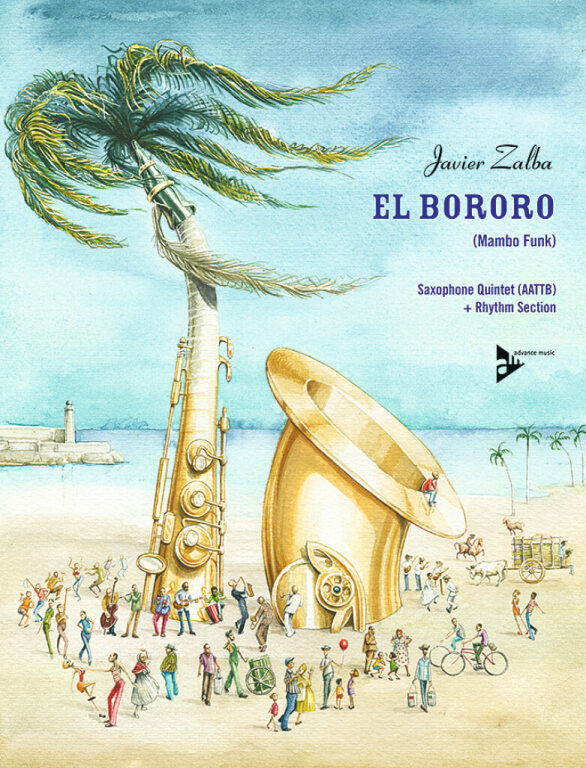THE MUSIC SHOP of Editio Musica Budapest Zeneműkiadó
Not available
Setting: Jazz ensemble
Instrumentation: 5 Saxophones [AATTBar] + Rhythm Section
Length: 68 pages
Format: 23,1 x 30,3 cm
Weight: 0.28 kg
Published: January 1, 2013
Publisher: Advance Music
Item number: ADV7565
ISMN: 9790206308901
This mambo-inspired piece of music is dedicated with great affection to Juan Carlos Ledón aka 'El Bororo', an outstanding Cuban saxophonist, who presently works as a teacher at 'Belén Jesuit Preparatory School' in Miami / USA. The genre and musical style known as mambo was created by the Cuban musician Dámaso Pérez Prado (1917 - 1989). However, it was in Mexico, the country this well-known composer emigrated to, where his interpretations first became famous. This novel style contributed a new form of expression to the already existing rhythmic concepts characterizing Cuban music. The accentuation of the strong beats by employing the cowbell, or 'cencerro', as the defining instrument, in combination with syncopated figures being executed by saxophones and brass instruments generated a rhythmic performance hitherto unknown in Cuban music. According to Pérez Prado himself, 'mambo' is a syncopated combination of a rhythmic pattern being performed by the saxophones to which any melody can b e added. This is exactly what happens in part A of this composition, where the first alto sax plays the melody while the others perform the off-beats. It is primarily the baritone that plays a syncopated rhythm in addition to the rhythmic-harmonic basis of the instrumentation. The correct execution of the notated accents on the strong beats played by the brass and saxophone sections reinforces the clear definition of this style, as is the case with such classic themes like 'Mambo No. 5' and 'Qué rico el mambo', which are both compositions by the originator of this genre. Non-musical tools that became integral parts of mambo, such as the characteristic scream let out to end an 8-bar melody, are also made use of in this composition (example: measures 44 through 51). The influence of jazz standards makes itself heavily felt in the piece.
 Deutsch
Deutsch Español
Español Français
Français Magyar
Magyar Polski
Polski Română
Română Slovenský
Slovenský Slovenščina
Slovenščina 中文
中文